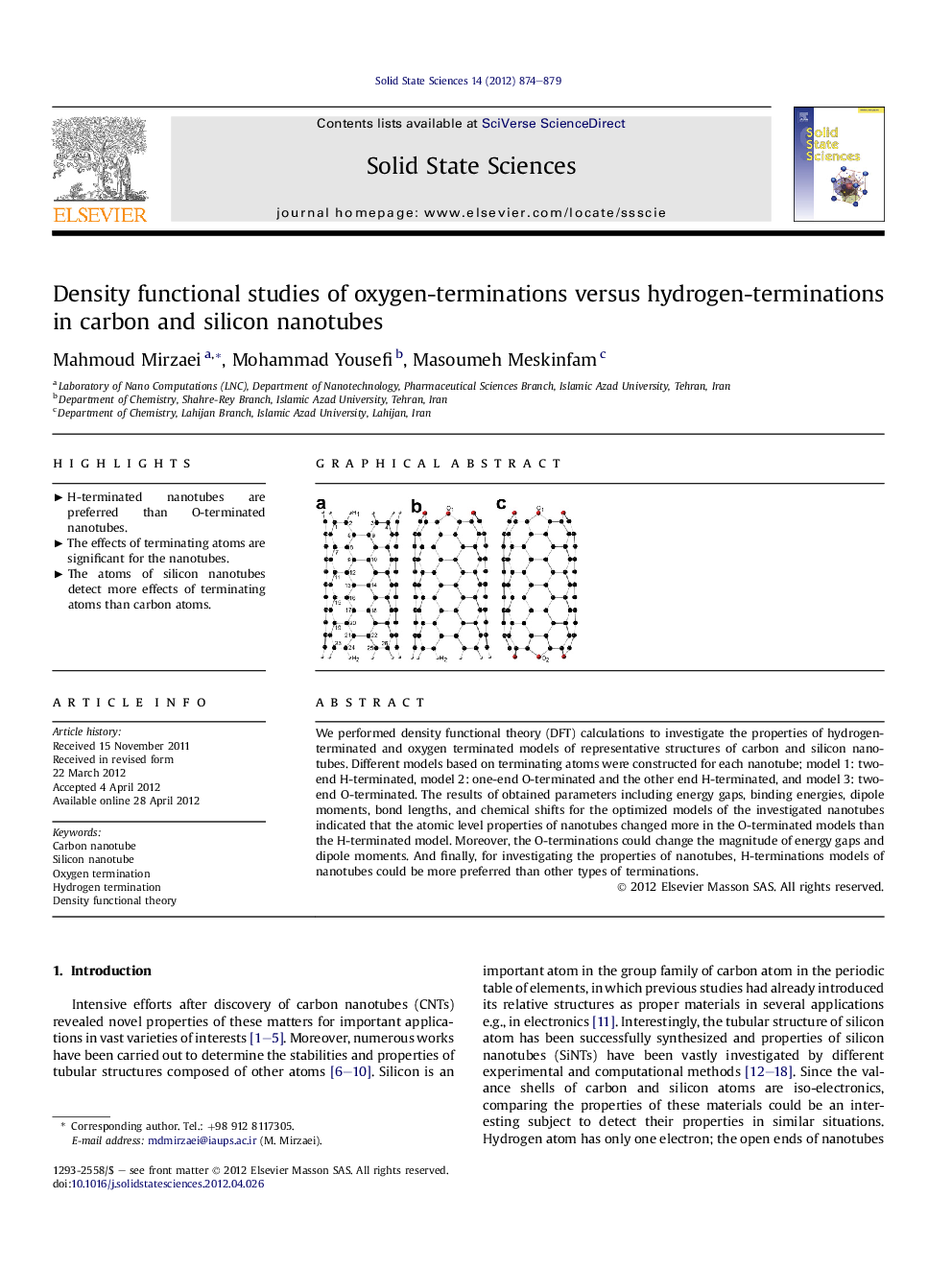| Article ID | Journal | Published Year | Pages | File Type |
|---|---|---|---|---|
| 1505086 | Solid State Sciences | 2012 | 6 Pages |
We performed density functional theory (DFT) calculations to investigate the properties of hydrogen-terminated and oxygen terminated models of representative structures of carbon and silicon nanotubes. Different models based on terminating atoms were constructed for each nanotube; model 1: two-end H-terminated, model 2: one-end O-terminated and the other end H-terminated, and model 3: two-end O-terminated. The results of obtained parameters including energy gaps, binding energies, dipole moments, bond lengths, and chemical shifts for the optimized models of the investigated nanotubes indicated that the atomic level properties of nanotubes changed more in the O-terminated models than the H-terminated model. Moreover, the O-terminations could change the magnitude of energy gaps and dipole moments. And finally, for investigating the properties of nanotubes, H-terminations models of nanotubes could be more preferred than other types of terminations.
Graphical abstractFigure optionsDownload full-size imageDownload as PowerPoint slideHighlights► H-terminated nanotubes are preferred than O-terminated nanotubes. ► The effects of terminating atoms are significant for the nanotubes. ► The atoms of silicon nanotubes detect more effects of terminating atoms than carbon atoms.
